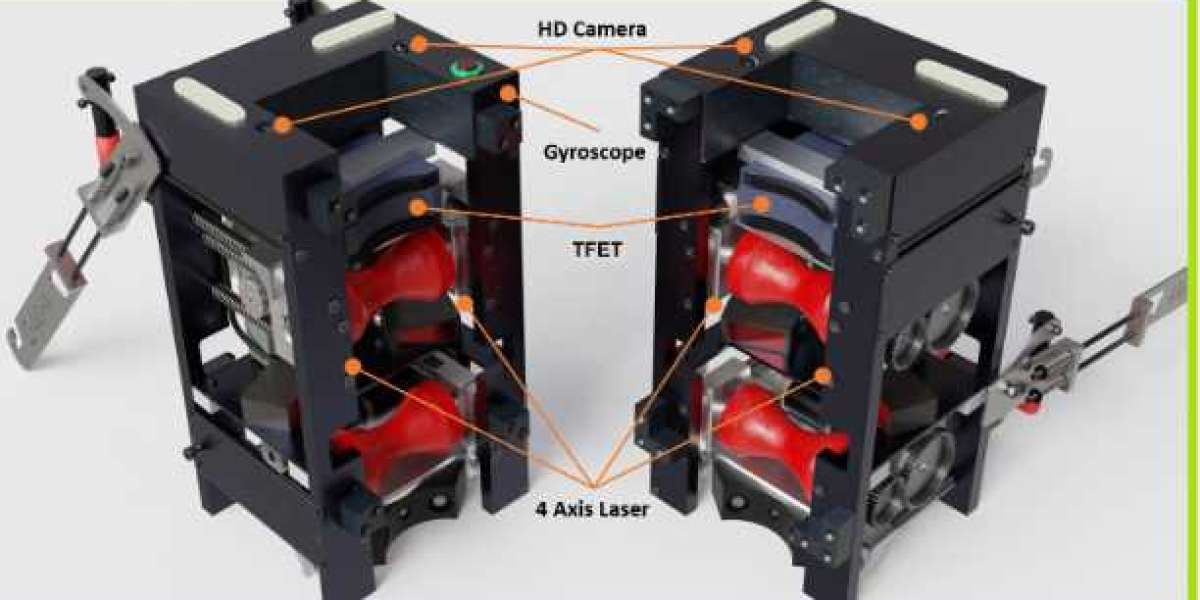In the realm of oil refining, the importance of maintaining and optimizing equipment cannot be overstated. Among the myriad of components in a refinery, coke drums hold a significant position. These massive vessels are critical for the delayed coking process, where heavy residual oil is thermally cracked into valuable lighter products like gasoline and diesel. Given their essential function and the harsh operational environment they endure, monitoring the health and performance of coke drums is crucial. This is where coke drum laser scanning technology comes into play.
Understanding Coke Drum Operations
Coke drums are subjected to extreme thermal cycling, fluctuating between temperatures as low as ambient to over 900 degrees Fahrenheit during each coking cycle. This intense thermal stress leads to wear and tear, causing deformation, cracking, and other structural issues over time. Traditional inspection methods, while somewhat effective, often lack the precision and speed required to detect early signs of these problems.
Enter Laser Scanning Technology
Laser scanning technology has revolutionized the way inspections are conducted. Utilizing high-precision laser beams, this technology creates detailed 3D models of coke drums. These models provide comprehensive data on the drum's dimensions, surface conditions, and structural integrity. The process involves placing laser scanners around the drum to capture millions of data points, which are then processed to generate a precise 3D representation.
Benefits of Coke Drum Laser Scanning
1. Enhanced Accuracy and Precision
Laser scanning offers an unparalleled level of accuracy, capturing minute details that might be missed by conventional inspection methods. This precision allows for the early detection of anomalies such as bulging, thinning, or cracks in the drum walls, enabling timely intervention before issues escalate into major problems.
2. Time Efficiency
Traditional inspection methods can be time-consuming, often requiring partial or complete shutdowns of the coke drum. Laser scanning, on the other hand, can be performed relatively quickly, minimizing downtime and operational disruptions. This efficiency is particularly beneficial in the fast-paced refinery environment where time is money.
3. Comprehensive Data Collection
The 3D models generated through laser scanning provide a wealth of data that can be used for various analytical purposes. Engineers can compare scans over time to monitor changes and predict future wear patterns, helping in the planning of maintenance and replacement schedules. This proactive approach enhances the longevity and performance of the coke drums.
4. Improved Safety
By identifying potential issues early, laser scanning contributes to a safer working environment. Detecting and addressing structural weaknesses before they lead to catastrophic failures reduces the risk of accidents and ensures the safety of personnel and equipment.
5. Cost Savings
While the initial investment in laser scanning technology might seem high, the long-term benefits far outweigh the costs. Reduced downtime, fewer unplanned maintenance activities, and extended equipment life translate into significant cost savings for refineries.
Case Studies and Real-World Applications
Several refineries have successfully integrated laser scanning into their maintenance routines with remarkable results. For instance, a refinery in North America reported a 30% reduction in maintenance costs and a significant decrease in unplanned outages after implementing regular laser scanning inspections. Similarly, a European refinery noted an improvement in coke drum lifespan by identifying and addressing minor deformations early on.
Future Prospects
The future of coke drum laser scanning looks promising with advancements in technology. Integration with artificial intelligence (AI) and machine learning algorithms can further enhance the predictive capabilities of this technology. By analyzing historical data and identifying patterns, AI can provide more accurate predictions and maintenance recommendations.
Moreover, the development of portable and more user-friendly laser scanners will make this technology accessible to a broader range of refineries, including smaller operations that previously might not have been able to justify the investment.
Conclusion
Coke drum laser scanning represents a significant advancement in the field of refinery maintenance and safety. Its ability to provide precise, comprehensive, and timely data makes it an invaluable tool for optimizing the performance and longevity of coke drums. As technology continues to evolve, the benefits of laser scanning are likely to become even more pronounced, solidifying its role as a cornerstone of modern refinery operations. Investing in this technology not only ensures the efficient operation of coke drums but also contributes to the overall safety and profitability of the refinery industry.








